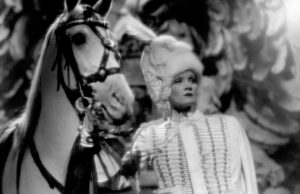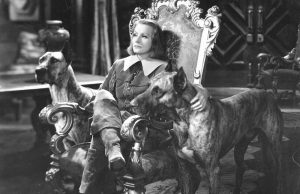The Wild Heart (1950) [aka Gone to Earth (1952)]

Toronto Film Society presented The Wild Heart/Gone to Earth (1950/52) on Sunday, January 20, 1985 in a double bill with Jesse James as part of the Season 37 Sunday Afternoon Film Buffs Series “B”, Programme 6.
Production Company: Vanguard Productions. Presented by: Alexander Korda and David O’ Selznick. Written, Produced and Directed by: Michael Powell and Emeric Pressburger. From the Novel: “Gone to Earth” by Mary Webb. Photography: Chris Challis, at the actual settings on the Welch border, in Shepperton, England and in Hollywood, California. Production Design: Hein Heckroth. Music composed and Conducted by: Brian Easdale. Opening Narration: Joseph Cotten. Film Editor: Reginald Mills. Art Direction: Arthur lawson, Ivor Beddoes. Sound: Charles Poulton. Director and Editor in USA (uncredited): Rouben Mamoulian.
Cast: Jennifer Jones (Hazel Woodus), David Farrar (Jack Reddin), Cyril Cusack (Edward Marston), Sybil Thorndike (Mrs. Marston), Edward Chapman (Mr. James), Esmond Knight (Abel Woodus), Hugh Griffith (Andrew Vessons), George Cole (Albert), Beatrice Varley (Aunt Prowde), Frances Clare (Amelia Comber).
The story of the making and release of The Wild Heart is probably more interesting than the film itself. The picture was filmed under the title of the book it was based on, “Gone to Earth”, and released with that title in Great Britain and the Empire in November of 1950. Gone to Earth was a co-presentation of Alexander Korda and David O. Selznick, with Selznick controlling the U.S. rights, and Michael Powell and Emeric Pressburger directing. Powell later observed, “If you’re making a film between Goldwyn and Alex Korda…you get ground to powder” (Powell and Pressburger worked on another film, The Elusive Pimpernel, at the same time as Gone to Earth, for Korda and Goldwyn). Gone to Earth ran 110 minutes, with much of its stunningly beautiful footage devoted to locations in the magnificent Shropshire countryside. It was not well received by the English audiences or critics. David O. Selznick, who didn’t have a hand in the actual production, but retained U.S. control due to his loan-out of his wife, Jennifer Jones, was dissatisfied over the inadequate amount of screen time preserved for Jennifer Jones’ close-ups. He threatened Powell: “I’m going to sue on deviation from the script”, to which Powell responded: “But we didn’t deviate.” Selznick: “That’s what I’m going to sue you on.”

Selznick convinced his friend, Rouben Mamoulian, to re-cut the film and shoot two weeks of new footage in Hollywood with Jones, Cyril Cusack and David Farrar. All but thirty-five minutes of the original Gone to Earth were thrown out, and the resulting film, with an opening prologue spoken by Joseph Cotten, opened in the U.S. in the summer of 1952, with a running time of 82 minutes.
Finally, we should note that both of this afternoon’s films are being presented in 35mm Technicolor prints. There is no question that Technicolor, from 1935 to 1955, was the finest colour process in film history, and the only colour process that does not noticeably deteriorate in time. This afternoon’s prints serve to point out the great advantages of the process over non-Technicolor films TFS has screened in recent times, such as Some Came Running, North to Alaska and The Swan this year, and The Great Escape, The Sheepman, Comanche Station, The Magnificent Seven, The Horse Soldiers etc., in the past. Enjoy the green grass and trees, the blue sky and water, the brown earth, and the red dresses and blood. They just can’t make films like this anymore!
Notes by Jaan Salk










Leave a Reply